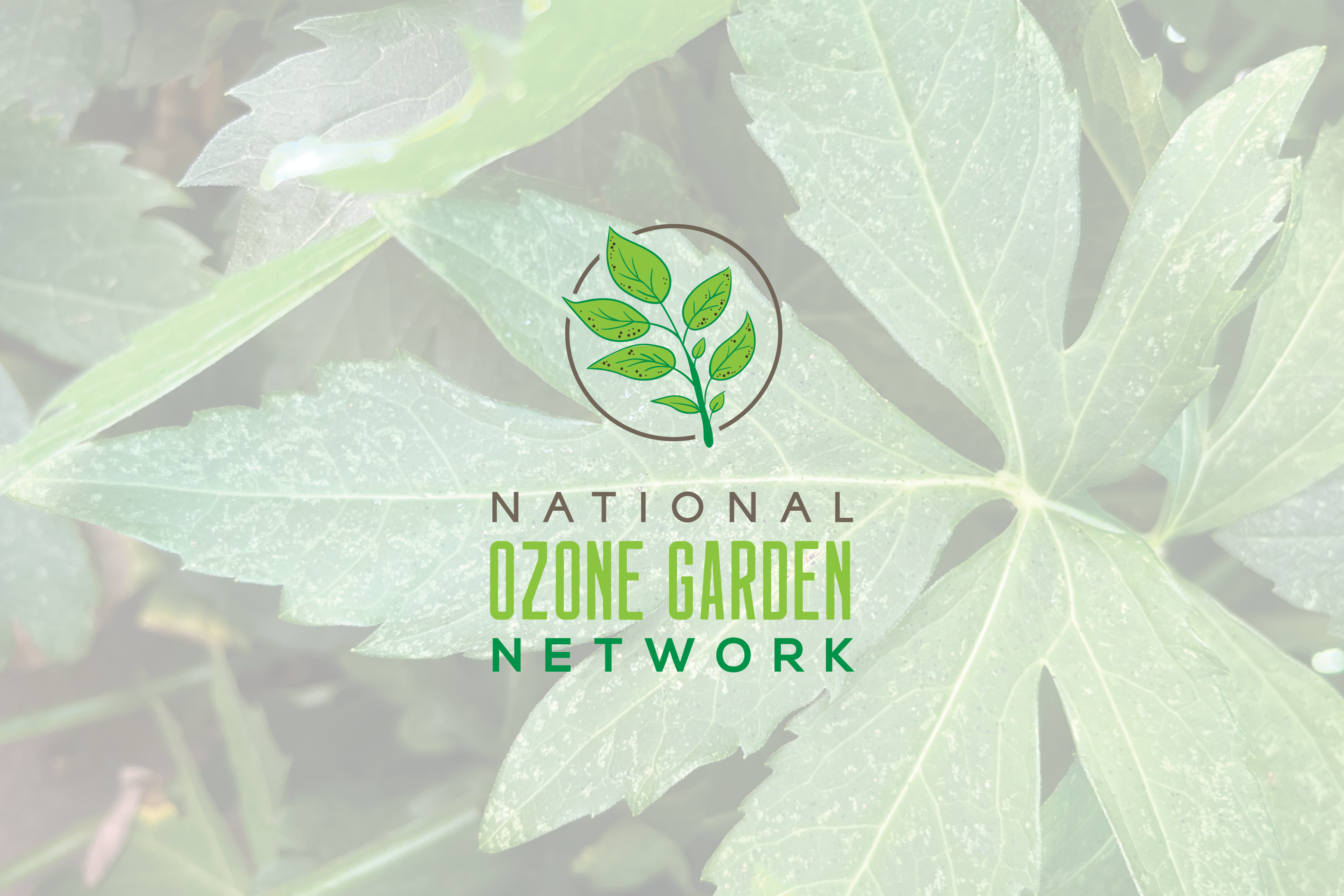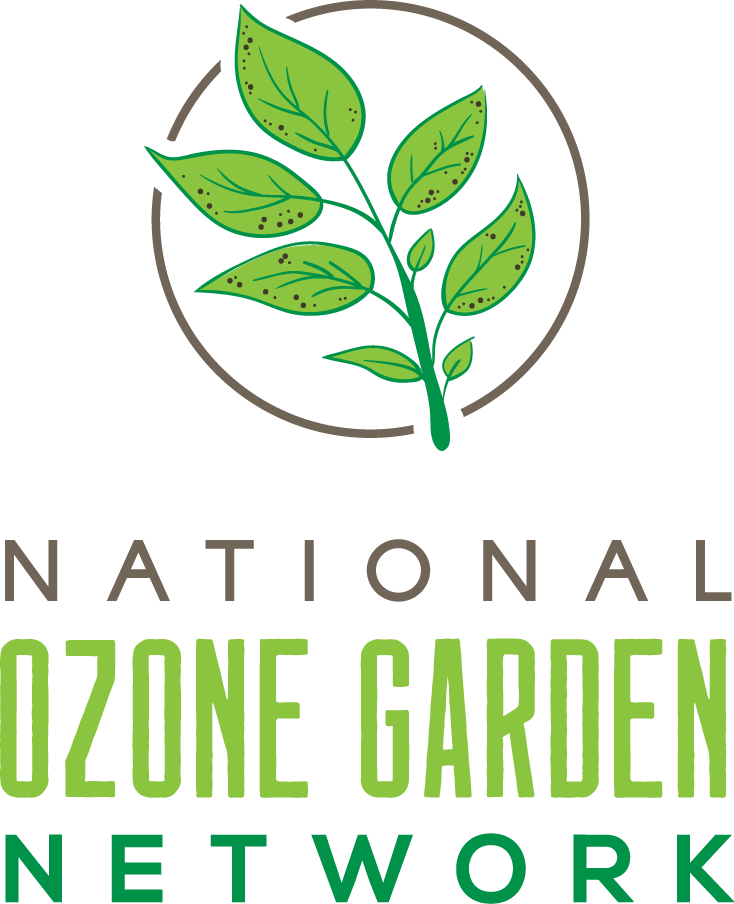Ozone Garden Overview

Are you interested in joining the National Ozone Garden Network? The University Corporation for Atmospheric Research, Harvard Smithsonian Center for Astrophysics, and Langley Research Center have received funding from the NASA Teams Engaging Affiliated Museums and Informal Institutions (NASA TEAM II) to support gardens across the US. Learn more
Did you know that ground-level ozone is a serious pollution problem? Ground-level (“bad”) ozone is toxic to plants and animals – including humans. It is different from the ozone layer (“good” ozone) high in the atmosphere that blocks the Sun’s harmful ultraviolet (UV) rays, even though it is the same chemical in both places. Ground-level ozone is harmful to us because it is in the air we breathe.
Although ozone is invisible, its effects can be observed on the leaves of certain plants. Ozone sensitive plants develop symptoms on their leaves that we can see, telling us when high levels of ozone are present in the air around us. Because they provide this information, they are called bioindicator plants. However, there are still lots of questions when it comes to ozone and plants:
- What ozone concentrations cause damage to plant leaves?
- How severe does the damage get?
- Is it the same everywhere?
Scientists are trying to understand the answers to these questions. Will you help us by collecting data? Your observations of ozone damage will help answer these questions.

Ozone Garden Locations Map
Browse the various ozone garden locations by using the map below. You can click on a leaf for more information and to view the data collected at that location.
Acknowledgement
We would like to thank the Green Team from CU Boulder for their hard work and dedication in the development of this Ozone Garden website: Kara Wallace, Michael Whitlock, Tanner Slemmer, Abbi Nicholson, Hunter Belcher, Percy Bell, Tanya Leung
2021 website updates done by the No-Zone Team from CU Boulder: Haley Drexel, Nick Volpe, Sabrina Kavesh, Travis Cochran, Tyler Devlin, Yu Li
Since 2021, updates and content have been maintained by the Ozone Garden Leads Team: Danica Lombardozzi, Ryan Johnson, Erika Wright, Becca Hatheway, Julie Malmberg, Emma Hagen, Laureen Trainer, Sharon Clark, Melissa Rummel, and Robert Payo.
Contact
Please direct questions/comments about this project to: